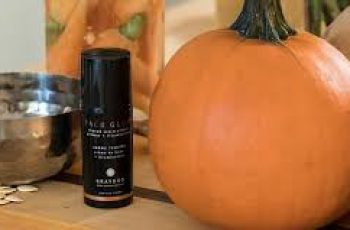
What To Use on Skin After Microneedling
Microneedling aftercare can affect the results and side effects of the treatment and the speed of microneedling recovery.
So- the serums, sunscreens, and other products you apply in the 24 hours after microneedling are critical.
In this article I will share the advice I give to my microneedling patients on how to care for skin after needling procedures.
The same advice will apply if you are treated with a microneedling pen, the Dermaroller, the AquaGold device, or 30-32 gauge needles.
Wait a week to restart retinol
Avoid heavy creams the first 24 hours
Use hyaluronic acid serums the first 24 hours
Avoid acids like ascorbic, azelaic, and glycolic for 7 days
Avoid any makeup for 24 hours
Microneedling Aftercare: Essential Tips and Best Practices
Microneedling involves using fine needles to create micro-injuries in the skin.(1) This process stimulates collagen production and enhances the absorption of skincare products.
However, the benefits and time to recovery of microneedling largely depends on 3 things:
Needle diameter and length
Skill and technique of the medical provider
Post-treatment care
This article will focus on microneedling aftercare and what products to use and when.
Proper aftercare can improve the results of the procedure, while improper care can lead to adverse effects like breakouts, hyperpigmentation, scarring, granulomas. and other problems.
Microneedling Recovery
Microneedling and dermarolling makes holes in the skin’s epidermis called channels. This affects the skin’s barrier and increases water evaporation off the skin known as transepidermal water loss (TEWL).
It allows everything to enter the skin faster and easier.
How long does it take the skin to recover? It depends on the size of needle used. It may take up to 18 hours for the channels to close. (3)
It usually takes 4-5 hours for the TEWL to return to normal.(5) I tell my patients it will take about 6 days on the average for skin to recover from microneedling.
Post Procedure Skin Care
When discussing microneedling aftercare, we need to differentiate between:
Immediately after (channels still open)
24 hours after (wound healing processes)
7 days after (inflammation and pigmentation risk)
Products to Use Immediately After
Your skin with the open microchannels skin is extremely vulnerable for the first 5 hours and very vulnerable for 18 hours. Whatever you put on your skin during that time will absorb much more. Increased absorption is not always a good thing. There are some chemicals that are irritating or that you do not want to absorb systemically.
For example, so you need to beware of irritating ingredients that you don’t want absorbing deep into the skin and entering the blood stream. Anything toxic becomes more toxic after microneedling. Preservatives and fragrances are more likely to cause allergic reactions in this scenario.
“Avoid putting anything on your skin for the first 18 hours after microneedling unless your dermatologist says it is OK to use!”
Dermatologist Dr. Leslie Baumann MD, FAAD
Safe Skin Care for Immediately After Microneedling
PRP seems to be the best thing to put on the skin during microneedling. (9,10) Most doctors do not put anything on top of the PRP – so you go home looking bloody which is why this is referred to as a vampire facial.
There are not very many safety studies on using different products immediately after microneedling when the channels are still open.
I will share my thoughts here, but remember that we do not have safety data on the best products to put on skin after microneedling.
The best advice is not to put anything on your skin after microneedling unless your doctor or aesthetic medical provider tells you to.
The healing balms below can be safely used the first day after microneedling. They were developed to be put on wounds.
In my dermatology practice, we recommend one of the Plated Calm Post procedure Serum right after the procedure. We apply it in the office before you leave.
We may also use the Plated Intense or Daily Serum- they all have the same exosome technology.
The skin care brand Colorescience did a study after radiofrequency microneedling 29 subjects. In their study they showed that some of their SPF products were safe to use after Rf microneedling.
They and 68% of subjects observed an improvement in skin redness and treatment site marks after applying the skincare protocol.
(7) Rf microneedling is a little different than regular microneedling because it uses heat which may make the channels close sooner- so I still caution you about using anything on your skin for the first 18 hours.
These are the sunscreens that Colorescience studied and showed were safe after microneedling. When possible, wait 18 hours before using these.
If you cannot wait that long- at least try and wait 5 hours. You can apply these on top of a wound healing ointment which will help improve safety.
Hyaluronic Acid Serums
HA serums are often used during and after microneedling.
(8) I have looked through the ingredients on many hyaluronic acid serums and I cannot find any that I would put on the skin during and after microneedling because they have preservatives
like phenoxyethanol that can irritate wounded skin due to increased absorption. They also may have alcohol that will sting the skin after microneedling. These are safer to use 18 hours after microneedling.
If you have products you like to use post microneedling in your patients, please share in the comments and I will research them.
You want to find HA serums with as few irritating ingredients as possible. However, I could not find any HA serums that don’t have ingredients from my avoid list in them.
Please tell me in the comments if you can find “Purer” HA serums without phenoxyethanol and other ingredients on my avoid list.
Growth Factor Serums
There are conflicting studies on if growth factors are beneficial after microneedling (11-13). Right now I do not know of any growth factor serums that are safe to use immediately after microneedling.
The problem is not the growth factors, it is the other ingredients in them like phenoxyethanol that can irritate skin.
Vitamin C Serums
Hold off on using Vitamin C serums for at least one day because using vitamin C (ascorbic acid) after microneedling requires caution.
Water-soluble ascorbic acid is generally safe, but it’s often made at a low pH, which can irritate or harm microneedled skin.
Fat-soluble versions, like ascorbyl palmitate, have been linked to granulomas. (14) A granuloma is a small area of inflammation caused by the body’s attempt to isolate foreign substances.
These can be hard to get rid of, often requiring long-term treatment, and can be disfiguring, making the skin look uneven and inflamed.
Using the wrong type of vitamin C after microneedling can cause these granulomas, which are not just annoying but can be a serious skin issue.
Less acidic forms of vitamin C, such as ascorbic acid esters, might be safer for use after microneedling, but more research is needed to confirm this.
Skincare Products to Use 18 Hours After
Once 18 hours has passed, the channels will be closed and your skin barrier will be mostly restored, however, you skin is still experiencing a wounding response with inflammation.
So what you use for the next 3 days matters. You want to support the generation of collagen but not impede the healing process or irritate the skin.
You definitely don’t want to incite hyperpigmentation. So use a special post microneedling skin care routine beginning 18-24 hours after the procedure and continue for 5 days.
Look for ingredients like growth factors, exosomes, and coenzyme Q10. Only use Vitamin C serums that have a gentle pH (not acidic).
These are the top 10 products to use on the skin day 2- 6 after microneedling:
Alastin Regenerating Skin Nectar
Colorescience All Calm Clinical Redness Corrector SPF 50
Neocutis BIO SERUM FIRM Rejuvenating Growth Factor and Peptide Treatment
Pavise Dynamic Age Defense SPF 30
Plated SkinScience Calm Serum (Or the Intense or Daily Serum)
Replenix Growth Factor Restorative Serum
Revision Skincare C+ Correcting Complex 30% (This Vitamin C is not acidic or exfoliating so is ok to use after microneedling.)
Rationale #5 The Milk Concentrate
Sente Dermal Repair Cream
SkinMedica TNS Advanced + Serum
The best to choose depends on your Baumann Skin Type. Take the quiz to shop using your skin type.
Cleansers to Use After Microneedling
You need to use cleansers with very gentle detergents. Below are post procedure cleansers safe to use after microneedling. The best is Proteya Daily Revitalizing Facial Cleanser in my opinion.
Post Needling Skin Care Day 1-6
It is critical to use very good sun protection for 2 weeks after microneedling. Sunscreen is always important but your skin is most vulnerable for 2 weeks.
If you are a Pigmented Baumann Skin Type or have had hyperpigmentation in the past, use a skin lightener serum before applying sunscreen.
These are the best sunscreens to use after microneedling:
Prevent Post-Inflammatory Hyperpigmentation
If you are a Pigmented Baumann Skin Type or have a history of hyperpigmentation or melasma, microneedling may make your pigmentation worse because it causes inflammation.
Use skin lightening ingredients that help prevent the production of melanin. You should start these 18-24 hours after dermarolling or needling procedures.
Conclusion
If you do microneedling or dermaroller treatment, you will have better results and few side effects if you use the correct products for your skin type and skin concerns.
Please follow our guide of what to use just after the procedure and for the following week. After one week you can resume your normal skin care routine including retinol.


